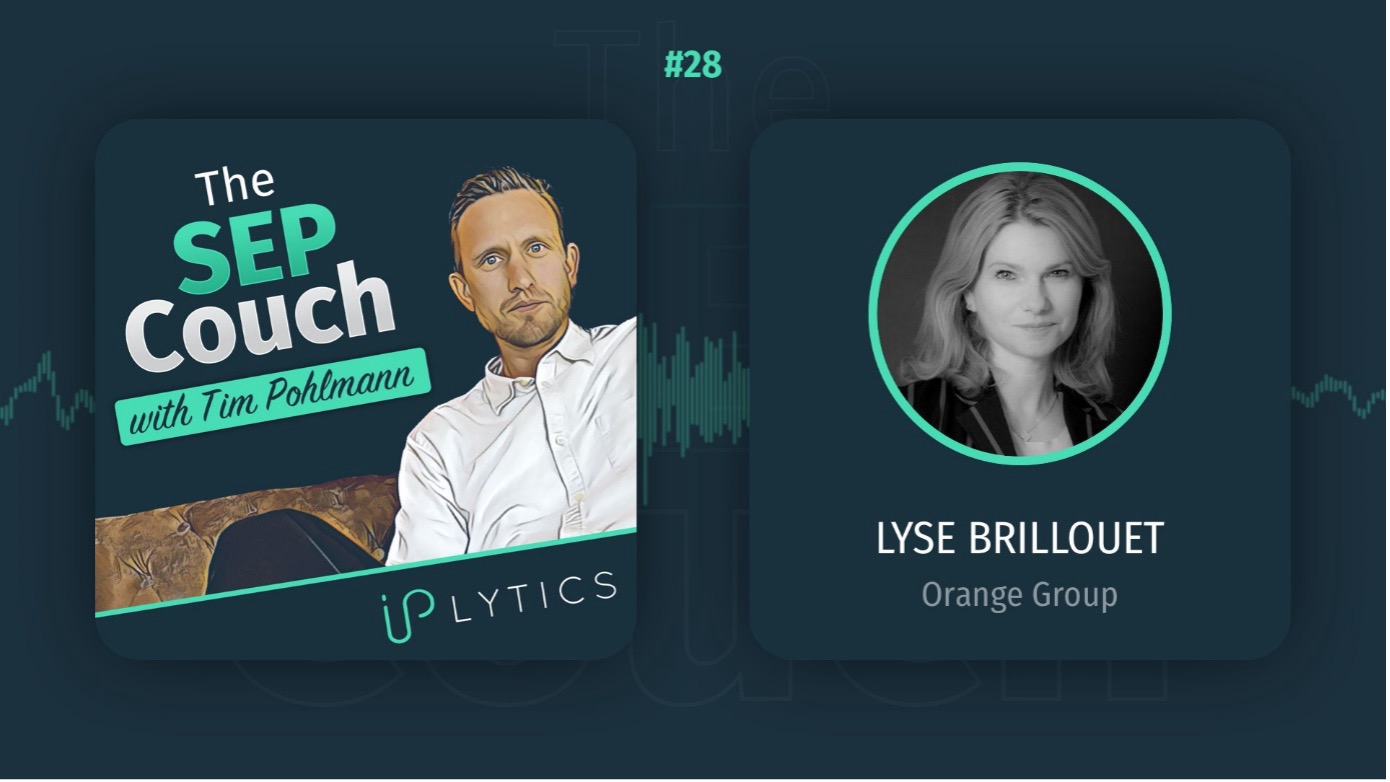 All too often inventors and entrepreneurs spend so much time creating that they lose perspective. They have their head down, plowing forward, focusing only on the day-to-day operations associated with inventing and growing a business. Almost without fail, inventors know very well what they have invented and what they plan to do, but they have a terrible sense of what their invention could be.
All too often inventors and entrepreneurs spend so much time creating that they lose perspective. They have their head down, plowing forward, focusing only on the day-to-day operations associated with inventing and growing a business. Almost without fail, inventors know very well what they have invented and what they plan to do, but they have a terrible sense of what their invention could be.
There is something peculiar about the inventively creative mind that all too frequently causes inventors to get stuck in one lane. An important part of creating a valuable invention is to creatively imagine how and where the invention could be deployed in a variety of different contexts. An invention that can be implemented in a variety of different settings turns something nice into something potentially very special. See Keeping an Expansive View of the Invention.
Throughout my career I have had many conversations with a number of different inventors who all thought that we didn’t understand the invention because the first draft of the patent application seemed to miss the simplicity of his invention. Our job as patent attorneys is to not only try and protect the invention presented, but to work with the inventor to figure out the full glory of what the invention could be and what it could evolve into. Furthermore, characterizing an invention as simple is a mistake of enormous proportions. What you have is not simple, but rather an elegant solution that can take a variety of forms. Because if it is simple the patent examiner will almost certainly reject the patent claims as being obvious. The point here is two-fold: (1) Expansively describe the variations and alternatives to capture the full available scope; and (2) simple inventions are obvious, so don’t ever trivialize your own invention. See When is an invention obvious.
A patent application should certainly protect what the inventor is doing and what they want to do, but remember that in order to get a patent you do not have to produce a working prototype. You just need to be able to explain the invention with sufficient detail so that others skilled in the relevant technology area could both make and use the invention themselves without having to engage in undue experimentation. What is “undue experimentation” is a topic for another day, but suffice it to say that invariably what the “invention” is from a patent perspective is much broader than what an inventor thinks they have, and that is one critical reason (among many) why if you can afford to hire a patent attorney or patent agent you are always going to be better served by doing so and will wind up with much broader protection than doing it yourself. Inventors will either hyper focus on the invention and leave much available patent scope not captured, or they will play coy and only describe things in the most general terms, thereby hiding the invention specifics and rendering any application fatally defective. Particular attention must be paid to guarding against both tendencies. See Appropriately Disclosing an Invention.
I constantly preach to inventors and entrepreneurs that they need to approach inventing in a business responsible way. That means that you should have immediate, short-term, intermediate and long-term goals and plans in place. Treat the invention from day one as if it will be wildly successful because if you don’t it will be too late once you realize that this is the homerun you have always dreamed about.
Appropriate planning will include, among many other things, giving consideration to what the next several phases of development will be if phase 1 turns out to be successful enough to warrant phase 2 and beyond. By doing this you will start to fill out those short-term, intermediate and long-term goals, which if they can be defined enough on paper can and should be integrated into your patent application. Always think about where you want to go and how you want to get there, as well as thinking about what the competition may want to do to elbow their way into your turf if you are successful. The business reality is if you are successful there will be others who want to get into your marketplace and compete against you; that is economics 101. So treat your patent application as a master plan and an integral part of your business development.
It is also critical for inventors and entrepreneurs to have a strategy to succeed, which seems simple enough, but is typically anything but simple for the creative types that are so good at inventing. The goal is not to create an invention that is cool, the goal is not to get a patent, but rather the goal is to make money. Having a cool invention and an issued patent are a means to the end, not the end in and of themselves. One cannot expect a money truck to show up on your doorstep simply because you have invented something or gotten a patent. So you must consider what it is you want to do with a patent as a part of an overall business strategy.
 If you approach your patent activities appropriately you can lay the foundation of a business plan, at least insofar as the technology and technological advancement of your innovation is concerned. But like almost everything in life, there is a cost associated with succeeding. The cost is hard work to be sure, but there will also be significant financial requirements as well. While you may need to bootstrap your invention and business, as you move forward you will invariably need funding, from Angel investors to start, and maybe from Venture Capitalists eventually. The more business responsible you have been along the way the more likely you are to be taken seriously. Inventors cannot under estimate the importance of being taken seriously.
If you approach your patent activities appropriately you can lay the foundation of a business plan, at least insofar as the technology and technological advancement of your innovation is concerned. But like almost everything in life, there is a cost associated with succeeding. The cost is hard work to be sure, but there will also be significant financial requirements as well. While you may need to bootstrap your invention and business, as you move forward you will invariably need funding, from Angel investors to start, and maybe from Venture Capitalists eventually. The more business responsible you have been along the way the more likely you are to be taken seriously. Inventors cannot under estimate the importance of being taken seriously.
Fatih Ozluturk is a prolific inventor with over 200 issued patents. His patents have resulted in over $1 billion in licensing revenue. Ozluturk is now an Angel investor and works with incubators in New York City. I interviewed him earlier this year and he explained to me that when he sees inventors taking business appropriate steps it creates a positive perception. See Provisional patents are like chicken soup, good for everybody. Ozluturk explained:
When I look at a company and see that the founders took the time to file patent applications, whether I believe that the patents will issue or not, it indicates to me that this is a group of entrepreneurs that understand their technology, they take it seriously, they run their business as a serious enterprise. They protect their intellectual assets. They’re seeing it as something more serious than just a weekend project. So it indicates to me a certain level of seriousness and attention to what they’re creating. And it indicates to me a certain level of pride in what they’re creating. This is regardless of whether their patents eventually issue or not. To me, making the effort and filing a provision application always reflects well on the company.
Regardless of what you may have read or been told, investors love patents and a coherent patent strategy. Patents provide a competitive advantage, and those sophisticated in business know enough to look for and exploit whatever competitive advantage exists. Patents are the 800 pound gorilla of competitive advantage, but realize if you are going to want and need significant sums of money from investors rarely does a single invention or patent command attention. No one wants to invest significant funds into a company that has a one-and-done approach to innovation. That is why the most valuable inventions will have applicability in a variety of fields, and will have a variety of different implementations, alternatives and variations.
Patents act as a barrier to entry and you want that barrier to be as high as possible. You need to understand the road is long. Take a lesson from Apple, Inc. Innovate and then churn your innovation for all its worth, re-purposing the technology, expanding into products and services, constantly push the envelope and milk the golden goose for all its worth!
For more information on patent application drafting please see:
- Patent Basics: Practice Tips for Achieving Success in Inter Partes Reviews
- An Alternative to Claim Mirroring in Initial Patent Application Filing
- IP Goes Pop! You Can’t Do That – What IP Cannot Protect
- How to Use the USPTO Patent Public Search Tool
- Using Analytics to Assess the Effectiveness of Common Patent Prosecution Practices
- Tips from a Former Examiner on How to Conduct Interviews at the USPTO
- Ten Mistakes to Avoid When Drafting Information Disclosure Statements
- Defanging Descriptive Material Rejections
- Can You Refile a Provisional Patent Application?
- Ten Common Patent Claim Drafting Mistakes to Avoid
- It’s All in the Hardware: Overcoming 101 Rejections in Computer Networking Technology Classes
- Disclosure Requirements in Software Patents: Avoiding Indefiniteness
- Patent Procurement and Strategy for Business Success Part III: Prosecution – Wielding an Invisible Hand
- Patent Procurement and Strategy for Business Success Part II: Claims – Targeting the Right Infringers
- Patent Procurement and Strategy for Business Success: Building and Strategically Using Patents that Target the Right Infringers and Thwart Competitive Countermeasures
- Fit to Drive: Three Inspiring Office Action Responses from the USPTO’s Art Unit 3668
- Design Patents 101: Understanding Utility Patents’ Lesser-Known Cousin
- Two Key Steps to Overcome Rejections Received on PCT Drawings
- Errors in Issued Patents as a Measure of Patent Quality
- Intellectual Property for Startups: Building a Toolkit to Protect Your Products and Design
- Why the Patent Classification System Needs an Update
- Understanding What a Design Patent is Not
- Design Patents: Under Utilized and Overlooked
- Deciding Where to Obtain International Patent Rights
- When to Use the Patent Cooperation Treaty—and Why It’s So Popular
- Why and When Design Patents are Useful
- PCT Basics: Obtaining Patent Rights Around the World
- ipAwarenessAssessment: Inventors and Business Owners Should Start Their IP Journey with this USPTO-NIST Tool
- Successful After Final Petitions Can Help Advance Prosecution (Part V)
- From Agent to Examiner and Back Again: Practical Lessons Learned from Inside the USPTO
- WIPO’s INSPIRE Offers a New Way to Select Databases for Patent Searches Involving Machine Translations
- Understand Your Utility Patent Application Drawings
- Why It’s Time to Board the PCT Train: The Benefits of Filing U.S. Patent Applications via the PCT First
- Implications of Filing Subsequent Patent Applications in the United States (Part III)
- Types of Subsequent Patent Applications in the United States (Part II)
- Getting a Patent: The Devastating Consequences of Not Naming All Inventors
- Getting A Patent: Who Should be Named as An Inventor?
- Make Your Disclosures Meaningful: A Plea for Clarity in Patent Drafting
- Applying for a Patent in Germany
- Autopilot or Advocate? Raising the Bar in Ex Parte Appeals at the USPTO
- Time to ‘Think PCT’: Rethink Your Global Patent Strategy to Preserve Your Seat at the Table
- Patent Office Insights from Two Former Examiners
- Conventional Patent Wisdom Revisited
- Develop Your Database of Templates for Responding to Office Actions
- Background Pitfalls When Drafting a Patent Application
- Eight Tips to Get Your Patent Approved at the EPO
- Four Things C-Suite Executives Need to Know About Patents
- Starting the Patent Process on a Limited Budget
- What to Know About Drafting Patent Claims
- Beyond the Slice and Dice: Turning Your Idea into an Invention

![[IPWatchdog Logo]](https://ipwatchdog.com/wp-content/themes/IPWatchdog%20-%202023/assets/images/temp/logo-small@2x.png)

![[[Advertisement]]](https://ipwatchdog.com/wp-content/uploads/2018/10/Enhance-1-IPWatchdog-Ad-2499x833-1.png)
![[[Advertisement]]](https://ipwatchdog.com/wp-content/uploads/2018/10/ip-ad_rocket_464.jpeg)
![[Advertisement]](https://ipwatchdog.com/wp-content/uploads/2024/04/Artificial-Intelligence-2024-REPLAY-sidebar-700x500-corrected.jpg)
![[Advertisement]](https://ipwatchdog.com/wp-content/uploads/2024/04/UnitedLex-May-2-2024-sidebar-700x500-1.jpg)
![[Advertisement]](https://ipwatchdog.com/wp-content/uploads/2024/04/Patent-Litigation-Masters-2024-sidebar-700x500-1.jpg)

![[Advertisement]](https://ipwatchdog.com/wp-content/uploads/2021/12/WEBINAR-336-x-280-px.png)
![[Advertisement]](https://ipwatchdog.com/wp-content/uploads/2021/12/2021-Patent-Practice-on-Demand-recorded-Feb-2021-336-x-280.jpg)
![[Advertisement]](https://ipwatchdog.com/wp-content/uploads/2021/12/Ad-4-The-Invent-Patent-System™.png)






Join the Discussion
8 comments so far.
aldo
May 6, 2015 11:18 pmthanks fatih – you are very right – simple can also be genius and thus un-obvious because so many people missed it until one day somebody did not… & that is a challenge for current ip systems that rely on complexity…
blessings & be safe,
aldo:)
x-it inventor
big lather inventor
Fatih Ozluturk
May 4, 2015 09:59 pmAnother great article Gene! And thank you for the quote!
Wanted to briefly respond to a comment I see not only here but one that I hear time to time elsewhere, namely that “simple” equates to “obvious”, therefore simple inventions are obvious. This is a misunderstanding. I have hundreds of patents that have been licensed worldwide and generated hundreds of millions of dollars over the years. Consistently, the inventions that became financial successes are those that are “simple” — however, they are far from being obvious. An example of a simple invention (sadly not one of mine) is Velcro. Simple. Definitely not obvious. You can invent all sorts of Rube Goldberg contraptions to do what Velcro does, but they will not be as successful. One can say that E=mc2 is simple, but perhaps even Einstein himself wouldn’t say it was obvious. Simple does not equate to obvious.
Amnon M Cohen
May 4, 2015 06:59 amPrepatent Prepartnering, is the best yet strategy, but it is yet unknown wisdom I own – and because here is not the place to explain it in full, I can just say, that it is tested and explained in general terms @ prepatent.org and related websites, where I am giving more information on this modern way to secure and see rewards from patents. As you know, 2% of patents and some say only 1% of patents end up as commercial success; plus big fights like Apple & Samsung end up in settlement, and the costs of the PTO plus its process exploit and helps inventors, plus a yet longer list of reasons why prepatent prepartnering is the best yet new strategy to stay happy and not loose your IP or money invested in taking your discovery, innovation, idea to markets.
Anon
May 3, 2015 10:14 amBenny,
You continue to think that your legal understanding of the word “obvious” is sufficient.
It is not.
Yes, there might be overlap of what may in fact be truly obvious from a legal perspective and your “feelings” that something is obvious, but please realize that any such overlap does not for one minute vouch for your misunderstanding of the legal term.
Without explicit details of the context, your anecdotal recounting of attorneys’ “pulling the wool” simply fall flat.
Benny
May 3, 2015 08:28 amAnon,
I have read 35.103. It is clear (to me, at least) that an improvement can be “obvious” rather than a patent eligible invention. I have also seen office actions in which the examiner justifiably defines a patent application as “obvious”, and in reply the applicants’ attorney attempts to pull the wool over the examiners’ eyes.
Anon
May 3, 2015 07:52 amBenny,
As it seems a habit of yours, you once again misconstrue the writing here.
I note that in the linked article on “obviousness” that I had made a similar comment more than a year ago as to your lack of understanding of obviousness that was also echoed in a comment you made just a few days ago.
That you seem unwilling to move forward with your understanding of obviousness as a legal doctrine appears to be equally matched with your willingness to be a Blog Troll and misconstrue writings to take them out of context and somehow make them “scandalous.”
There is nothing at all in Gene’s writings to suggest that he is even remotely implying any nefarious action of misleading examiners.
Nothing.
What you fully miss is the elegance and invention that may exist even in the simplest of innovation. Simple does not equal trivial.
Perhaps Gene missteps with the one phrase that you latch onto. Perhaps you should recognize the context of that phrase and the article as a whole. Your eagerness to jump on a single phrase while you let the entirety of the article’s meaning escape you indicates that your interest is not in learning the law, but in finding fault with the law and the desire for you to have your own views supplant the law.
Benny
May 3, 2015 05:22 am” if it is simple the patent examiner will almost certainly reject the patent claims as being obvious”… ” simple inventions are obvious, so don’t ever trivialize your own invention”
The patent examiner may be correct in identifying the invention as obvious. Are you suggesting a policy of deliberately misleading the examiner ?
angry dude
May 2, 2015 08:35 pmGene,
You do realize that some of the most important inventions are not planned, they just come naturally by a flash of genius or play of chance or whatever ?
Take Viagra for a good example
Talking business plan before the “thing” is invented is ridiculous